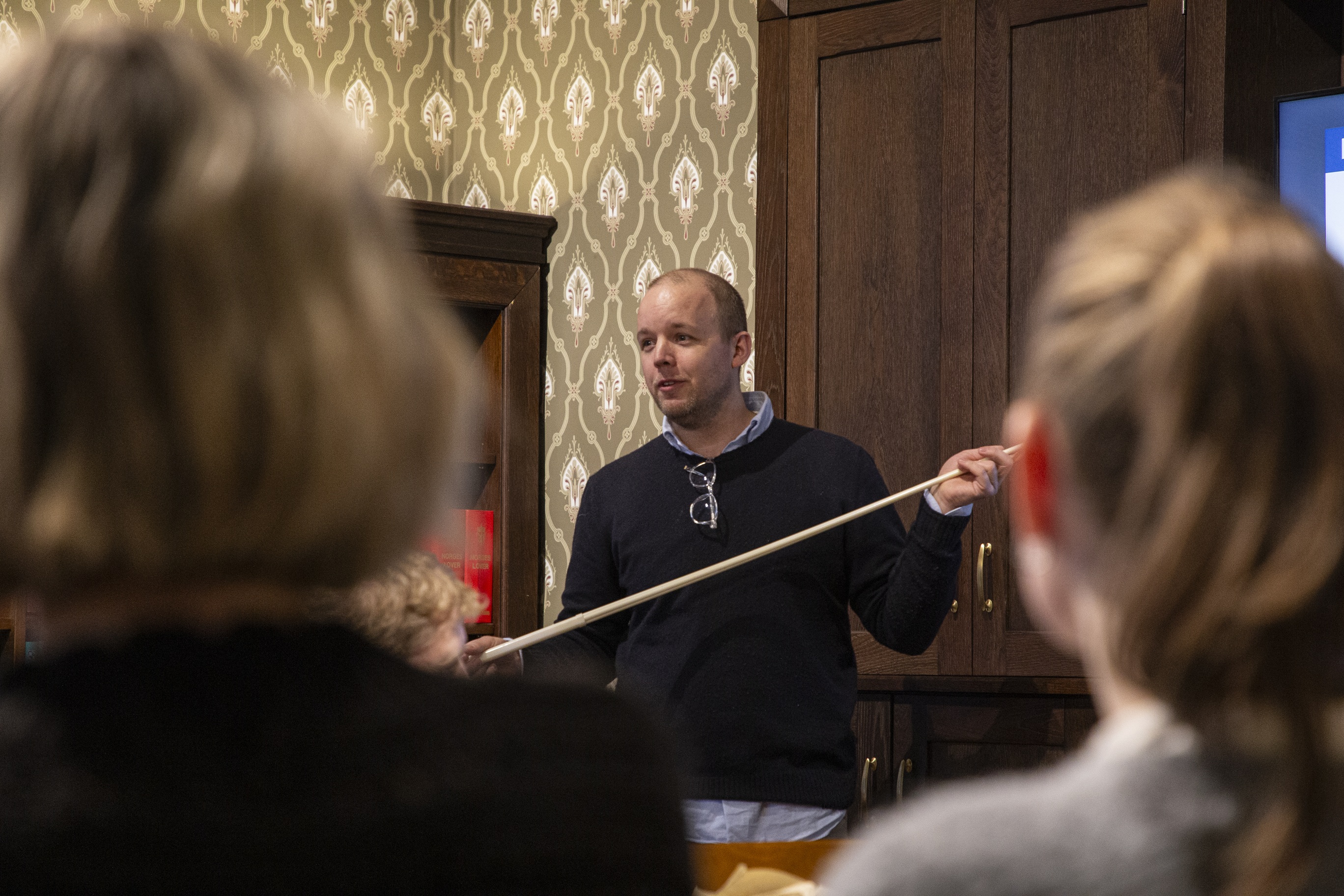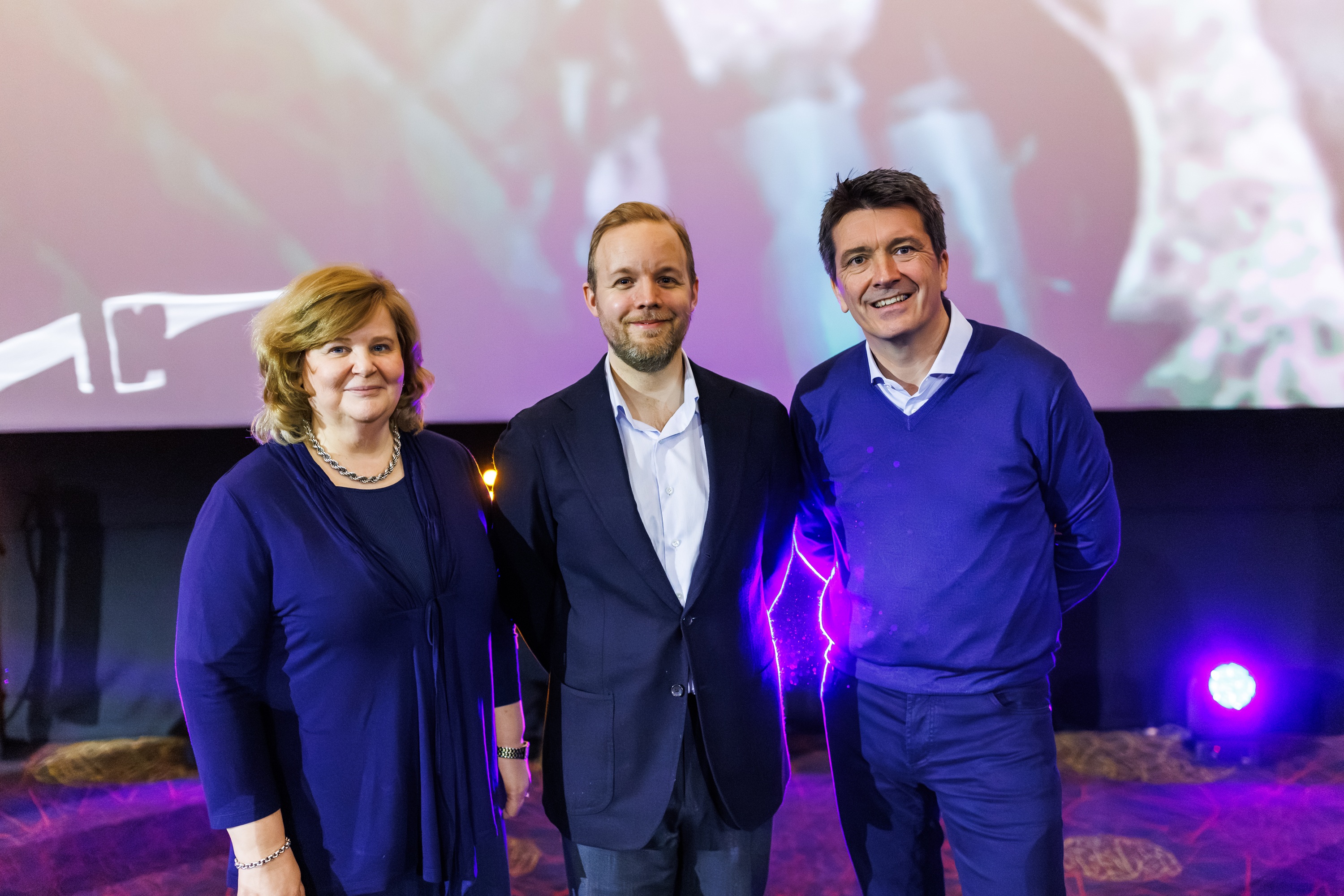Alumni Spotlight: Fabian Harang
After co-leading the "Signatures for Images" project at CAS, mathematician Fabian Harang is now tackling climate challenges in the grocery industry - connecting basic research and business interests.

Photo: Camilla K. Elmar
At CAS, Fabian co-led the "Signatures for Images" project from 2023-2024, a project developing mathematical foundations for analyzing images as two-dimensional surfaces. Now, he's applying his research and expertise to real-world challenges at the newly established AMOR – Centre for Applied Mathematics and Operations Research at BI Norwegian Business School. Through the the "Smart Food Flow" project, Fabian is developing mathematical and statistical methods to reduce greenhouse gas emissions in the grocery industry. We spoke with him about his experience at CAS, the importance of basic research, and how his current work builds on foundations established during his time as a CAS project leader.
Could you briefly explain what the CAS project “Signatures for Images” was about?
In the “Signatures for Images” project, co-led by Kurusch Ebrahimi Fard at NTNU, our goal was to establish rigorous mathematical foundations for constructing iterated integral signatures over two-dimensional surfaces, treating an image precisely as such a surface. Over the course of the year at CAS, we tackled this challenge from several mathematical angles—including algebraic, analytical, and probabilistic perspectives—and ultimately published two central articles that provided complementary insights into the subject. The project also initiated several discussions and new projects that have resulted in more publications, and it continues to this day as ongoing research.

CAS’ mission is to further excellent, basic, curiosity-driven research. Why is basic research important?
Basic research provides the essential theoretical framework that not only deepens our understanding of fundamental principles but also paves the way for applied innovations. My experience at CAS—particularly through the development of iterated integral signatures—offered robust conceptual tools, which later proved invaluable when transitioning to more application-oriented projects. This strong theoretical foundation directly facilitated my current endeavors at AMOR – Centre for Applied Mathematics and Operations Research, especially evident in applied projects such as Smart Matflyt. I have experienced firsthand that the distinction between basic and applied research often appears more as a continuum than as a clear division. Insights gained through curiosity-driven inquiry consistently inform practical projects, demonstrating the close relationship between theoretical foundations and practical applications.
In what way did the year at CAS affect your research career?
Although my stay at CAS was relatively recent, it marked a clear turning point in my research career. The full academic freedom and leadership experiences provided an opportunity to immerse myself in challenging, mathematically interdisciplinary problems without the usual teaching and administrative constraints. This supportive environment encouraged me to explore new ideas and methods, merging fundamental research insights with more applied challenges. Importantly, it provided the momentum to launch AMOR, significantly redirecting my focus and influencing how I now integrate methods from mathematics, statistics, and operations research in my current work.

What are you currently working on?
As mentioned, much of my time is dedicated to AMOR – Centre for Applied Mathematics and Operations Research. At AMOR, we have launched a significant initiative called Smart Matflyt, which focuses on developing new quantitative analysis methods for the food retail industry. The project is a collaboration with REMA 1000, one of Norway’s largest food retails that will provide us with excellent data and insights into the workings of the food industry. This will enable the project’s clear objective: create new quantitative and system driven methods for reducing climate emissions and waste while preserving operational efficiency in the industry. In parallel, I continue working on several projects related to iterated integral signatures—a research direction initiated during my stay at CAS. It is now, more than ever, that I see the tangible outcomes of that formative experience.
What do you remember best from your stay?
I remember the stimulating academic environment at CAS, where engaging discussions and the freedom to explore innovative, interdisciplinary ideas enriched my research experience. Beyond the scientific aspects, I also fondly recall the excellent Julebord—a definite highlight. Both the intellectual stimulation and the warm social atmosphere—for example, getting to know colleagues from various scientific disciplines during our daily lunches—left a lasting impression on me.
What advice would you give to future CAS project leaders?
My advice is to use this unique opportunity not only to get to know your collaborators better and perform excellent research together but also to actively connect with people from other disciplines. During my stay at CAS, I learned a great deal from members of other groups, gaining insights into academic life, funding application processes, and general career development. These cross-disciplinary interactions have been extremely valuable and have had a lasting impact on my academic journey.
By bridging rigorous mathematics with real-world applications, Fabian's work illustrates how curiosity-driven research can contribute to tackling some of society's most pressing challenges—proving that the path from basic to applied research/business interests is not only possible but necessary for meaningful innovation.
Read more about Fabian and Kurusch's research project here >